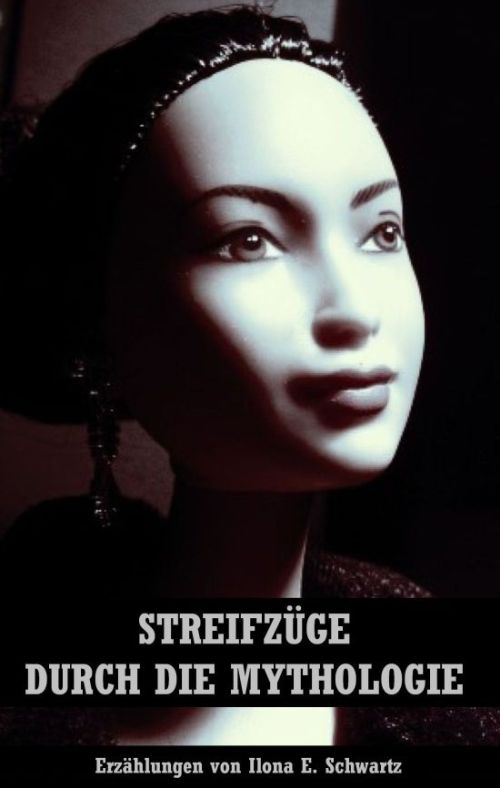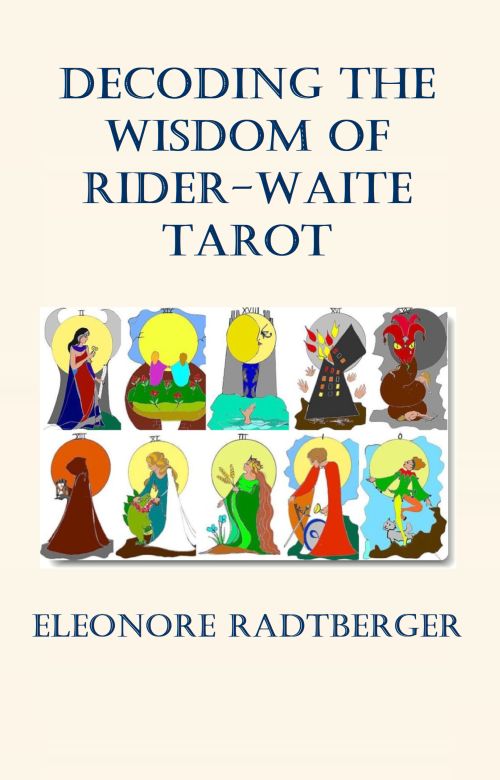
|
Coffee grounds as a medium for interpreting the future
The history and ritual of the coffee grounds reading
Coffee grounds reading has a long tradition and is practised in many cultures as a method of divination and fortune telling. What is known about coffee grounds reading, how did it come about and are there other traditional methods of reading the future from drinks?

The history of the coffee grounds reading
The origins of coffee grounds reading can be traced back to the 16th century, when coffee arrived in Europe from the Middle East. The tradition of reading coffee grounds is particularly deep-rooted in the countries of the Orient and the Balkans, where it is associated with a variety of cultural and social rituals.
Over time, the practice spread to other parts of the world, finding its way into the parlours and coffeehouses of 18th and 19th century Europe. The exact origins of coffee fortune telling are unclear, but many believe it is an evolution of older divination practices.
Even in ancient times, people used various methods to predict the future, such as studying the stars, throwing dice or interpreting dreams. With the introduction of coffee as a stimulant, the idea of using the remains of the drink as a medium for reading the future was born.
The ritual of reading coffee grounds
Reading coffee grounds is more than just a trick. It is a ritual that requires skill and intuition. It begins with the serving of freshly brewed coffee in a special cup in which the grounds settle after drinking. The shapes and patterns of the grounds, which are generally believed to symbolise different aspects of life, can then be interpreted.
The meaning of the symbols can vary depending on the cultural context. Common motifs are animals, people or everyday objects. The ability to interpret these signs is often seen as a form of intuition or inspiration. It is not only what is seen that is important, but also how the motifs relate to each other and the emotions they evoke.
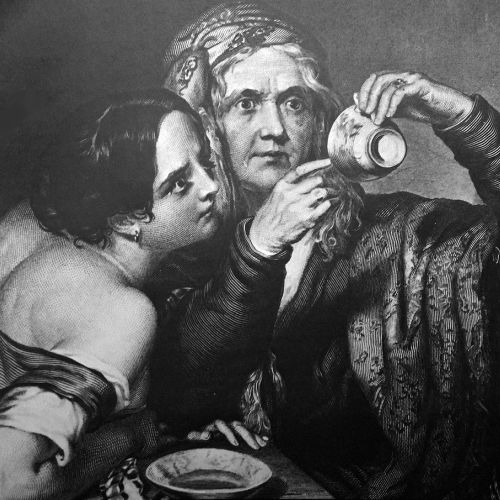 Tea reading (tasseomancy, tasseography)
Tea reading (tasseomancy, tasseography)
The ancestors of coffee grounds reading
Before coffee grounds fortune telling became popular, there was another way of reading the future from drinks. One of the oldest and best known practices is tea reading. Also known as tasseomancy or tasseography, this method is based on a similar technique to coffee grounds reading. Again, the grounds are analysed to derive meanings and predictions. The difference lies in the materials used and the specific symbols derived from the tea leaves.
Western tasseography can be compared to the methods of medieval European soothsayers, who made their predictions using splashes of wax, lead and other substances that were melted and then immersed in vessels (bowls, kettles, pots) of cold water. These traditional methods, which predate the introduction of tea and coffee to Western Europe, can also be compared to similar rituals in Asia, such as pagtatawas (melted wax from a burning candle poured into water).

Book announcement: "Decoding the Wisdom of Rider-Waite Tarot"
By Eleonore Radtberger 👉 Available now – make sure you bookmark this page
Whether practices such as wine reading (reading the residue in the wine glass) or beer reading (analysing the foam residue or sediment in the beer) were ever used for divination, weather forecasting or crop prediction is not known. However, it cannot be ruled out, as people have always read everything from stones to the flight of birds and even the entrails of sacrificial animals.
The importance of intuition
One of the most fascinating elements of coffee grounds reading and similar practices is the role of intuition. Fortune tellers and coffee grounds readers often rely on their gut feelings and personal experiences to interpret the signs. This emotional connection is crucial because it helps the reader to decipher the messages hidden in the forms.
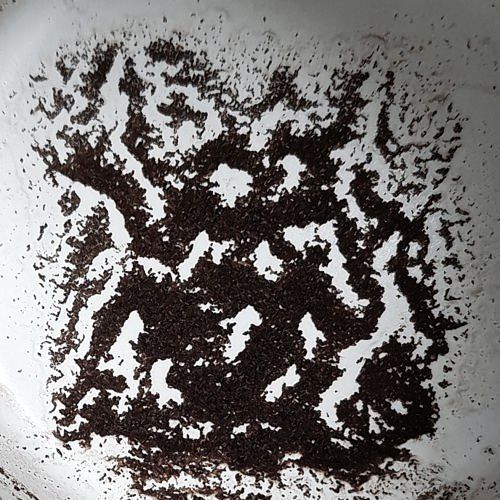
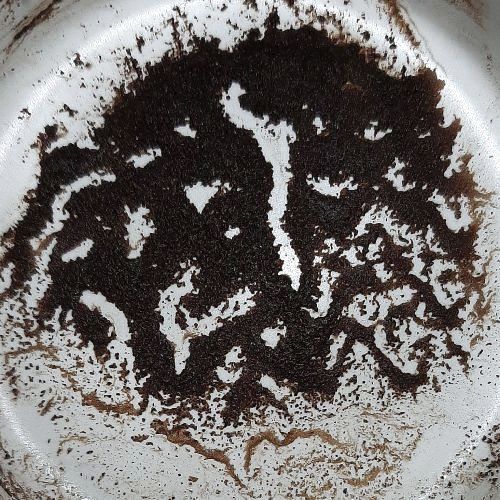
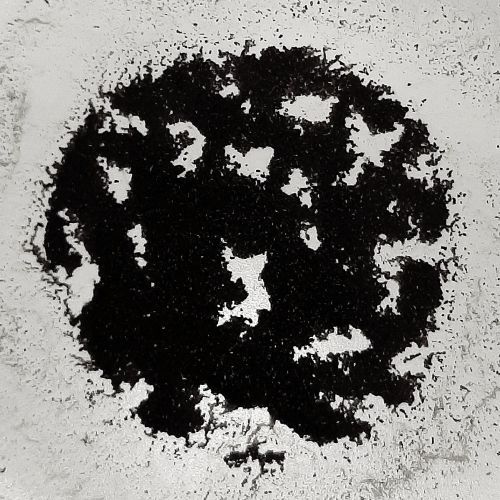
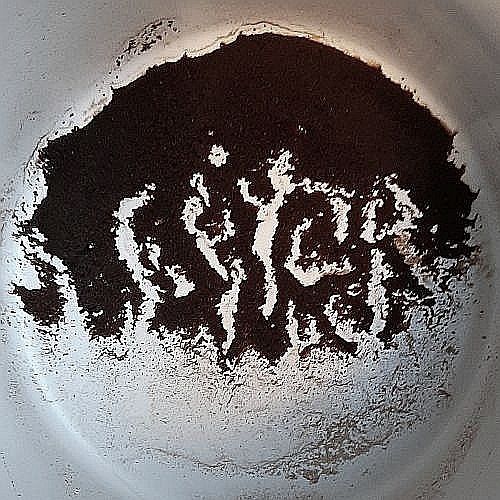 Coffee grounds reading: giant ant, two faces, a tree and some letters?
Coffee grounds reading: giant ant, two faces, a tree and some letters?
Coffee grounds reading is not a science, but an art that depends on the creativity and empathy of the reader. Many people find solace in it because it allows them to reflect on their fears and hopes.
A glimpse into the depths of your own mind
Coffee grounds reading is experiencing a renaissance these days. People are once again seeing it as a form of self-reflection and mindfulness. It can be practised in social settings, where friends and family gather to read each other's fortunes. This communal element not only strengthens bonds with one another, but also encourages a deeper examination of one's own life questions.
Reading coffee grounds is a fascinating custom with deep roots in human culture. Not only does it offer a glimpse into the future, but it also promotes human connection. Although the practice of divination has changed and evolved over the centuries, the fundamental desire to fathom the unknown has remained the same.
At a time when life can be hectic and challenging, coffee divination reminds us that it is also important to find moments of calm and reflection, whether we are looking at the bottom of our cup or the depths of our own minds.
© "Coffee grounds as a medium for interpreting the future. The history and ritual of the coffee grounds reading". Article and four coffee grounds images (bottom) by Izabel Comati, 12/2024. Image credits (top) Turkish coffee, and Tea reading (tasseomancy or tasseography), both CC0 (Public Domain Licence).
– The voice of cultural exchange. In memory of Pearl S. Buck
– Cards of the Major Arcana: Magician, High Priestess, Empress
– The impact of high inflation on the modern economy
Discover more articles! Use the search function:
English archive:
More reviews, book presentations and essays
2024/2025
German archive:
2024 |
2023 |
2022 |
2021 |
2020 |
2019 |
2018 |
2017 |
2016 |
2015 |
2014 |
2013 |
2012 |
2011 |
2010 |
2009
Become a writer for Pressenet! Write articles for our online magazine on trending topics such as best books to read, health and wellness, technology and gadgets, business and finance, travel and tourism, lifestyle and fashion or education and career. Info: Become an author
Sponsors and investors are welcome: If you found our articles interesting, we would be grateful for a donation. Please also recommend us to your networks. Thank you very much!
Sitemap About Privacy Policy RSS Feed



